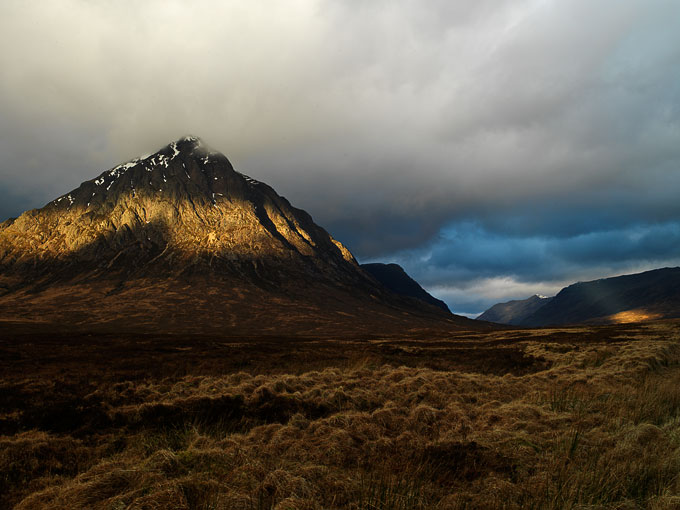

In the first part of this article I told that I increasingly make use of digital postproduction in my landscape photography. I discussed some underlying principal questions as well.
In this part I describe my first experiences with my digital back, experiences I had during a Winter week in Scotland.
This article doesn't talk about the trip itself.
By the way, Scotland in Winter is a good environment to test this kind of gear. Not just because the country is beautiful then, but it offers a little more challenge.
First of all the point of cold resistance, does it work in sub-zero (centidegrees) circumstances. Unfortunately the Winter was very mild and I didn't face any problems here. At least I can tell that the back had no problem coping with some rain...
Apart from that the colours in Winter are rather subtle. All kinds of browns, reds, ochres, shades of brownish greens. How does the digital back render these colours? And what at the moment of the sudden, very bright sunbeams, contrasting with the clouded background? Does the back handle these circumstances better than a 'standard' dSLR?
A last point before the real start of the article: I am absolutely no writer of tests and reviews. I didn't compare this camera and back to others, don't look at technical specifications and I am not into pixel peeping. I have nothing to offer than some personal experiences, which I think is a nicer read anyway.
The gear worked without any problem, everything behaved as it should. The handling is simple and no more difficult than working with film.
Before the first frame one plugs the cables into the imagebank and camera back, set the imagebank on and ready. Never changing film, that is a real pro. Moreover, never have to think again that you might waste money by taking more shots.
The imagebank is hung on the tripod and causes no problem. In the few instances that I had the camera handheld, I simply hung it over my shoulder. A CF-card option (like the new backs offer) would be nice for reportage work, but for landscape the imagebank, containing up to more than 800 images, works terrific.
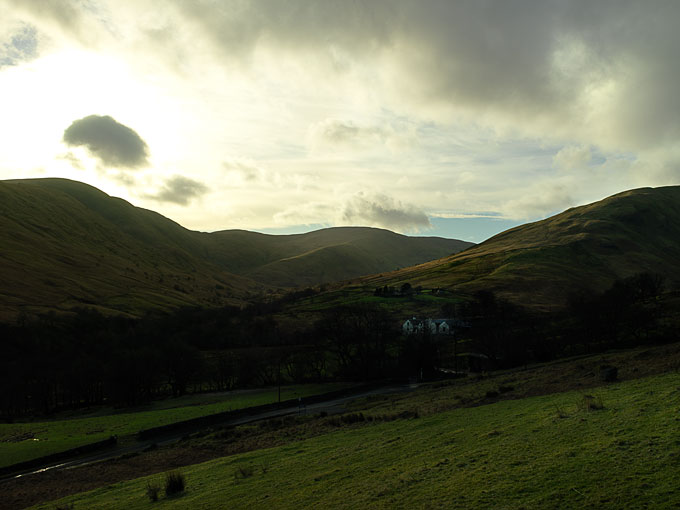 The histogram worked as the new light meter. Before the first shot I guessimated the exposure (sometimes after a meter reading with the camera), and after that first shot I corrected when necessary, according to the histogram reading.
The histogram worked as the new light meter. Before the first shot I guessimated the exposure (sometimes after a meter reading with the camera), and after that first shot I corrected when necessary, according to the histogram reading.
Lightmetering when using film did of course take no more time than this, but at least you can be sure about the result now.
I made nearly all photos at 50ISO and a few times at 200, when I wanted to work handhold with not so much light. Whenever the camera indicated that the image was overexposed, I stopped down a bit. I didn't exactly measure, but I think it often ended at the same values as I would have used for 100ISO film.
The back really has a larger dynamic range than slide, so I didn't use grey-grad filters. I trusted that the raw-conversion would solve everything in the end. Working on the files afterwards, this proved a bit too optimistic for the moments with bright sunny spells and dark clouds. In these specific circumstances I should have taken two exposures with two stops difference and then blend the exposures. Lesson learnt.
Another important difference is the one between sensor and film size: 37x48mm versus 55x55mm. In the finder there is a mask for the size of the sensor. Outside the edges the screen is darker, but still well visible.
At first I had some trouble to make a composition within the masker, instead of the entire screen. But in the end I knew no better. Furthermore it sometimes comes in handy to see what is just outside the image, without having to turn the tripod head.
A consequence of this size difference, is that the sensor doesn't use the entire field of view of the lenses - in other words, that the wideangles are less wide and the telephotos more tele.
Most of the time this was no problem. I used the 40mm more often than I did with film and made more panoramas. But sometimes it was painful to see things in the finder, that couldn't be included in the actual image.
Working digitally influences the entire trip to a large extent, especially when you take a laptop computer with you, as I did. Instead of having to wait how it all turns out, one can almost immediately see if things went fine.
This seems a real bonus, but it can cause a kind of restlessness. At night I was busy with the photos for hours. Of course this helps to learn and make a first selection, but perhaps some time between shooting and viewing will get you a better assessment, a bit more realistic and strict.
But this will be probably less of a problem when I travel with the family - the boys simply wouldn't allow me to take my time behind the laptop, let alone my wife... Downloading and a simple check on dust will be all.
Further I found out that I'd better delete at once the pictures that will be deleted anyway, like exposure trials. It costs less time afterwards and I won't throw away stuff that was meant to be used for e.g. exposure blending.
Of course there is a slight risk of throwing away something valuable, but with the Imacon back it takes some steps to delete, so this won't be a problem I suppose.
Another thing I found out (I am sure I am not the first, which is a small comfort): dust on the sensor is more of a problem with landscapes than with portraits, as you stop down the aperture more. Cleaning more often (an easy job with digital backs, compared to dSLRs) would have helped a lot. Cloning dust out is not my idea of a nice evening...
During the trip I made the first selection. Once at home I made a further cut of less than 500 fff-files (Imacon's raw format). I batch-renamed these in the Imacon Flexcolor software like: 20070217-001, the first selected frame of February the 17th 2007.
Then I selected the ones that made a chance for making it for the website, somewhat above the 200. These I converted to tiff files, which at 127MB a piece are quite large, and all together make every harddisk look small...
In the end 170 images were put on the website.
With film these numbers would probably be a lot less, maybe even just a half. Out of a two or three week trip I mounted somewhere between 200 and 300 slides, now I got this number of tiffs in a week.
The argument that digital would make photographers lazy, because they would just shoot away with there cameras thinking 'there are always some that are good', is real nonsense though. No serious photographer would work that way - good results are always the result of a lot of practice and a critical eye.
Colour temperature and exposure were set in Flexcolor, with some saturation added. Then I converted the files to tiff. The tiff files were then brought to taste in PS CS3, mostly by means of the curves tool, adding some contrast.
I love the Imacon files - you can set the curves almost everywhere you want, and the image stays technically sound. A dSLR lets you down at an earlier stage, by blowing highlights or black shadows. So the backs give you more artistic options.
The adjusted 5440x4080 tiffs are saved and then thrown through a photoshop action, resizing and sharpening them for web use in the 1360x1020, 680x510 and 170x128 size. That way I have several sizes ready for quick use - of course the full-size tiffs are used for prints.
Only the panoramas need some care in choosing the right sizes.
The panoramas were created by PS CS3 (automate => photomerge) out of the large tiffs. Excellent results, far better than in CS2 and even better than in PTgui, a program that has been designed for the purpose.
I have been working with the square size for years, an unusual format for landscapes. In a way it got my personal mark, a thing people recognized my work from (there are more photographers using the square for landscapes, but not that much). When I told on a Dutch photo forum that I was going to work with this back, a forum member even spoke of 'betraying the square'.
Well, that is put a bit too pathetically for me, but it seemed a real change indeed. I supposed I would often crop back to square.
Not so in real life. I tend to work in the same format as the camera. Sometimes I already thought of cropping an image, but that was more often to a slight panoramic 1:2 that to a square 1:1.
I have to get used to the choice for 'landscape' or 'portrait' though. No surprise of course, but being used to the square this was quite a change. In the end I turned out that I seldom used the portrait orientation, unless the subject is really vertical, like a waterfall. And I have to say that a change from the one to the other in a slideshow (digital this time) is a bit awkward.
Are my compositions totally different now? Browsing through my photographs I don't think so, but maybe new ways will develop.
One thing is clear: I work far more often in panorama than before. It really requests another way of looking at things and another way of positioning image elements. A beautiful new world!
After this week in Scotland and the postproduction at home I can only draw one conclusion: it is very nice working with this camera and back. It takes some time to get a grip of the workflow, but in the end it is much more flexible than slide, whereas the high quality of medium format slides are more than equalled.
The immediate feedback and the fact that experiment doesn't cost you anything but time are a challenge to experiment and work on new ways in one's photography. Furthermore the making of panoramas is far easier than through scanning.
On the commercial side of things it means that I can produce at a higher rate and send images to a client in less time. No vulnerable original slides as well, no need of scanning.
Of course, a good back-up system you actually maintain is a real must.
The only point where slides are really preferable, is in projection. There are several programs than let you make nice slide shows, complete with sounds and fade effects, but the quality and the entire experience of a classic medium format slideshow is better than viewing a show on a computer screen or with a standard beamer.
That said, there are very nice beamers on the market, I just have to wait till prices come down... And making prints from my landscape images has never been easier - and so beautiful!
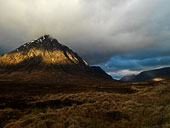 |
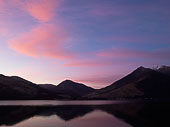 |
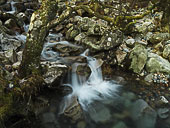 |
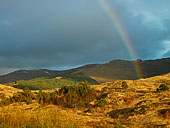 |
| Rannoch Moor & Glen Etive | Glen Coe | Lochaber | Loch Lomond |
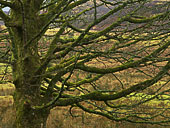 |
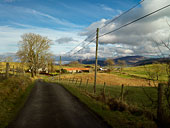 |
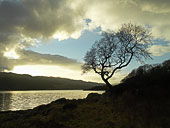 |
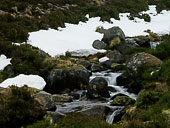 |
| Argyll: Appin | Argyll: isle of Lismore | Moidart and Sunart | the Grampians |
This article is written by Wim van Velzen, © 2007.
Comments and questions are always welcome!It is possible to order landscape prints or to use them editorially or commercially.